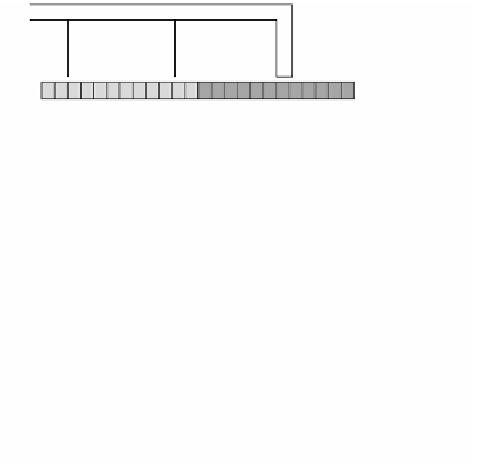Environmental Engineering Reference
In-Depth Information
zone (N-1)
zone N
Furnace discharging
port (Outlet)
Lot (X+1)
Lot X
Discharged Steel workpiece
Steel workpiece
charging direction
Operating
conditions
Temperature of discharged
steel workpiece
Actually
measured value
:
Set value
Lot X
Lot (X+1)
Time
Condition-change time (X X+1)
Soaking level of discharged steel workpiece
FIGURE 5.59
Schedule-free heating.
The interface function collects the information required for the online model of
the online tracking function such as the temperature of the steel workpiece and
furnace temperature obtained from a continuous heating furnace at fixed intervals.
It also passes the optimum furnace temperature set values obtained by the online
optimum heat pattern calculation function to the furnace temperature control function
at fixed control intervals.
The furnace temperature control function determines the amount of fuel to be
supplied in such a manner that the optimum furnace temperature set value is
maintained. The operation monitor screen starts, stops, or displays the status of the
functions of the digital control system that was actually used in this study.
In an online model, the imbalance portion of the heat balance of the in-furnace
gas is calculated to determine the change in the enthalpy. The radiant heat flux is
determined using the total absorptivity method (φ
CG
method). The temperature dis-
tribution in a steel workpiece is calculated by dividing the workpiece in the thickness
direction and using the difference calculation method. The distribution in the feeding
direction is calculated for each workpiece independently. The radiative heat transfer
and convective heat transfer from the gas to the surface of the workpiece that is in
contact with the gas and a certain amount of heat loss caused at the bottom of the
workpiece must be taken into consideration. For heat transfer through the furnace
wall, the furnace wall and ceiling are considered a single entity in the calculation
of heat transfer. As in the case of the steel workpiece, the temperature distribution
on the wall is calculated by dividing the wall in the thickness direction and using
the difference calculation method. The model calculation is made at fixed time
intervals. With calculation for the movement time equivalent to the mesh width in



















Search WWH ::

Custom Search